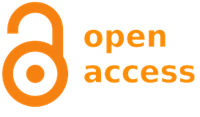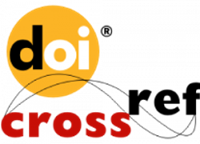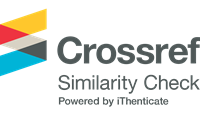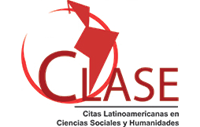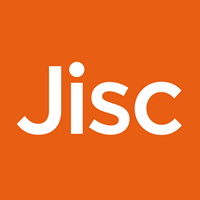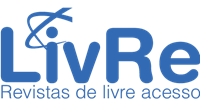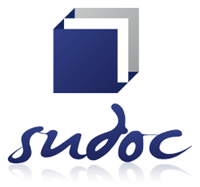Pedagogical professionalization in Ecuador: an experience of justice and social inclusion
Abstract
The following article starts from a conceptual approach that uses as references the perspective of Fraser and Honneth; Martín et al.; Murillo and Castilla and Escudero, among other authors that have researched around subjects related to justice and social inclusion. In order to interpret them from the Ecuadorian frame from a teaching formation experience offered by the Nacional University of Education (UNAE) initially in agreement with the Ecuador´s Ministry of Education (MINEDUC) and subsequently with the Technical Secretary of the Amazonian Special Territorial Circumscription (STCTEA), taking place in the nine provinces correspondent to the different administrative areas from the 2016-2019 period. Afterwards, data bases, pedagogical and governmental, were reviewed to interpret and analyze the information concerning the formation and education access for vulnerable groups that require pedagogical professionalization. From a revindication gaze towards the justice and social inclusion in the frame of access and permanence politics for vulnerable groups to the Ecuadorian educational system, the necessity of this study was defined according to its objective of characterize the participant population in the project Néopass@ction©: a cooperate experience of video-formation for the pedagogical professionalization in Ecuador, linking the following variables: ethnic, genre and age self-definition, according to the requirement of pedagogical formation at the national level and the coverage bring trough the distance education modality.
Downloads
References
Builes, N. S. (2007). ¿Diversidad-inclusión vs transformación? El Ágora USB, 7(2), 322-332. doi: 10.21500/16578031.1654
Cardona, O. D. (2012). La necesidad de repensar de manera holística los conceptos de vulnerabilidad de riesgo. “Una crítica y una revisión necesaria para la gestión" (Monografía de Graduación). Unidad Nacional para la Gestión del Riesgos de Desastres. Recuperado de https://bitlybr.com/Qj41
Castro, L. I. C., & Gonzáles, R. C. (2013). Pobreza y vulnerabilidad: factores de riesgo en el proceso educativo. Contextos Educativos, 16(2013), 55-72. doi: 10.18172/con.1290
Escudero, E. F. (2019). Aulas inclusivas: experiencias prácticas. Perfiles Educativos, XLI(164), 202-207. doi: 10.22201/iisue.24486167e.2019.164.59230
Espinosa, M. A. B., & Río, R. R. (2010). Modelo de selección para el ingreso a la educación superior: el caso de la UACH. Revista de la Educación Superior, XXXIX(156), 55-72.
Fraser, N. (2008). La justicia social en la era de la política de identidad: redistribución, reconocimiento y participación. Revista de Trabajo, 4(6), 83-99.
Fraser, N., & Honneth, A. (2006). ¿Redistribución o reconocimiento?: un debate político-filosófico. Madrid, ES: Morata.
Gómez, A. G. (2012). Justicia social en la dialéctica inclusión/ exclusión social. Integra Educativa, 5(2), 181-188.
Hurtado, R. G. (2006). Inclusión y diversidad en la educación. Sinéctica, Revista Electrónica de Educación, (29), 1-3.
Instituto Nacional de Estadística y Censos [INEC]. (2015). Compendio de resultados encuesta condiciones de vida ECV sexta ronda 2015. Quito, EC: INEC. Recuperado de https://bitlybr.com/md3C7r
Instituto Nacional de Estadística y Censos [INEC]. (2019). Registro estadístico de matrimonios y divorcios, 2018. Quito, EC: Inec. Recuperado de https://bitlybr.com/3GHqGlWB
Martín, C. S., Pineda, M. C. M., & Rodríguez, F. P. (2018). Ni inclusión, ni equidad. Otras miradas para la formulación de políticas educativas con justicia social. Folios, 48, 27-38.
Ministerio Coordinador de Patrimonio y Fondo de las Naciones Unidas para la Infancia [UNICEF]. (2009) Nacionalidades y pueblos indígenas, y políticas interculturales en Ecuador: una mirada desde la educación. Quito, EC: Unicef. Recuperado de https://bitlybr.com/Y0V8GoTm
Ministerio de Educación [MINEDUC]. (2018). Base de datos. Quito, EC: Mineduc.
Ministerio de Educación [MINEDUC]. (2009). Ley orgánica de educación intercultural bilingüe, publicada en el segundo suplemento del registro oficial no. 417. Quito, EC: MINEDUC.
Murillo, F. J., & Castilla, R. H. (2011). Trabajar por la justicia social desde la educación. Revista Iberoamericana sobre Calidad, Eficacia y Cambio en Educación, 9(4), 3-6.
Restrepo, R., & Stefos, E. (2017). Atlas del derecho a la Educación en los años de la revolución ciudadana: Una Aproximación a las Transformaciones. Azogues, EC: Unae.
Rodríguez, S. M., Quiroz, R. E., & Díaz, A. E. (2019). ¿Existen relaciones entre la formación ciudadana y la justicia social en la educación? De Prácticas y Discursos, 8(11), 71-90. doi: 10.30972/dpd.8113825
Sarrionandia, G. E., & Homad, C. D. (2008). Inclusión educativa. Revista Iberoamericana sobre Calidad, Eficacia y Cambio en Educación, 6(2), 1-9.
Secretaria Nacional de Planificación y Desarrollo [SENPLADES]. (2012). ¿Qué son las zonas, distritos y circuitos? Quito, EC: Senplades. Recuperado de https://bitlybr.com/LLOGv
Tejada, J. (2013). Profesionalización docente en la universidad: implicaciones desde la formación. RUSC 10(1), 170-184. doi: 10.7238/rusc.v10i1.1471

This work is licensed under a Creative Commons Attribution 4.0 International License.
DECLARATION OF ORIGINALITY AND COPYRIGHTS
I declare that this article is original and has not been submitted for publication in any other national or international journal, either in part or in its entirety.
The copyright belongs exclusively to the authors. The licensing rights used by the journal are the Creative Commons Attribution 4.0 (CC BY 4.0) license: sharing (copying and distributing the material in any medium or format) and adaptation (remixing, transforming, and building upon the material thus licensed for any purpose, including commercial purposes) are permitted.
It is recommended that you read this link for more information on the subject: providing credits and references correctly, among other crucial details for the proper use of the licensed material.








